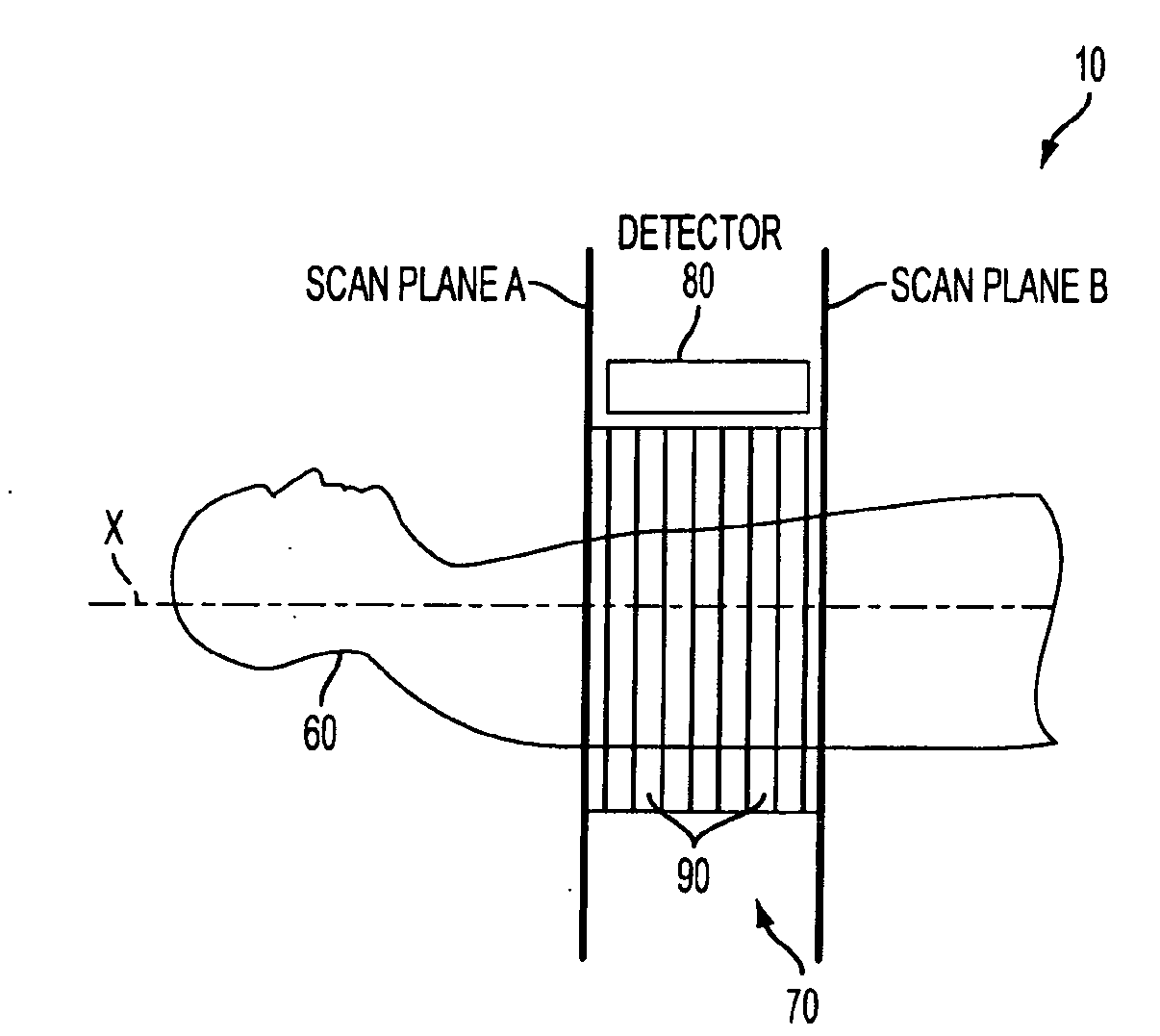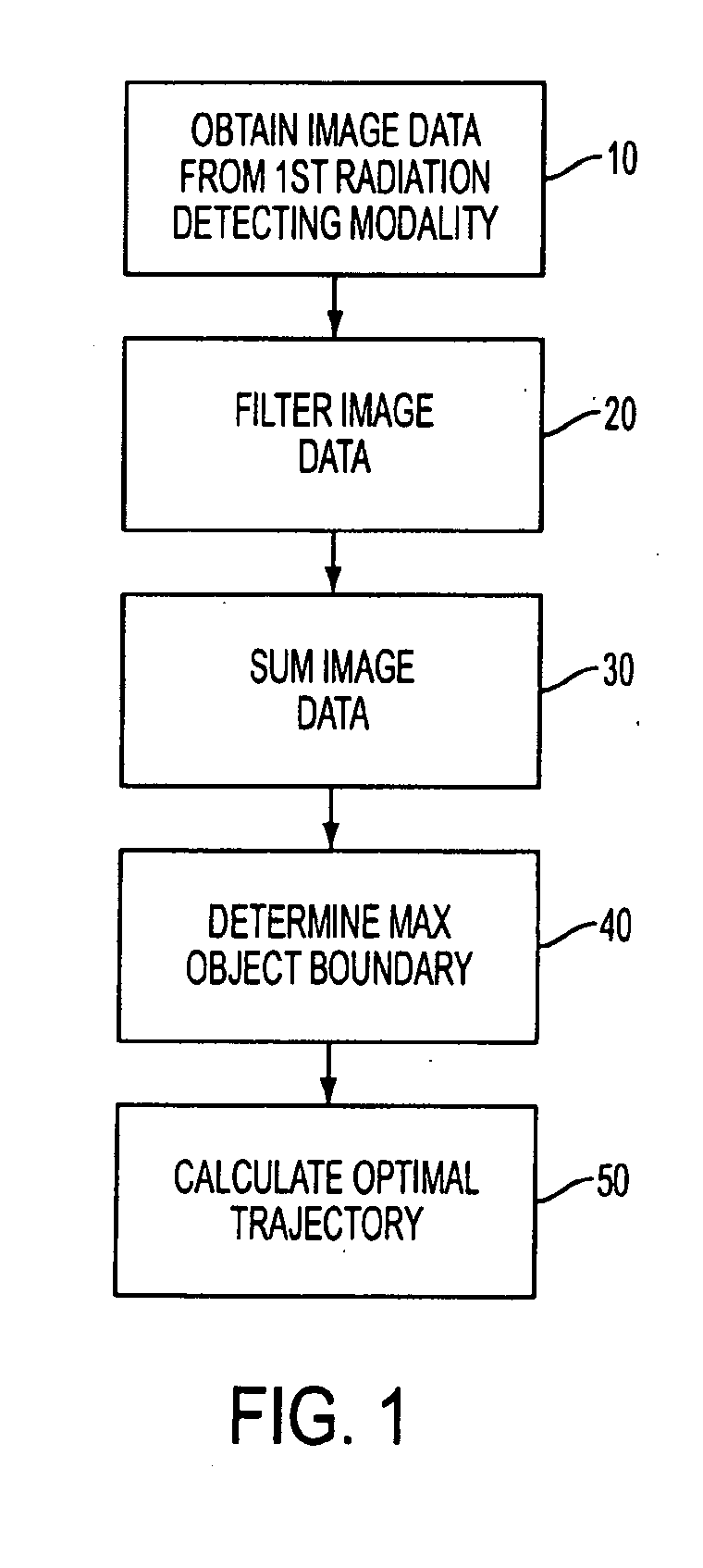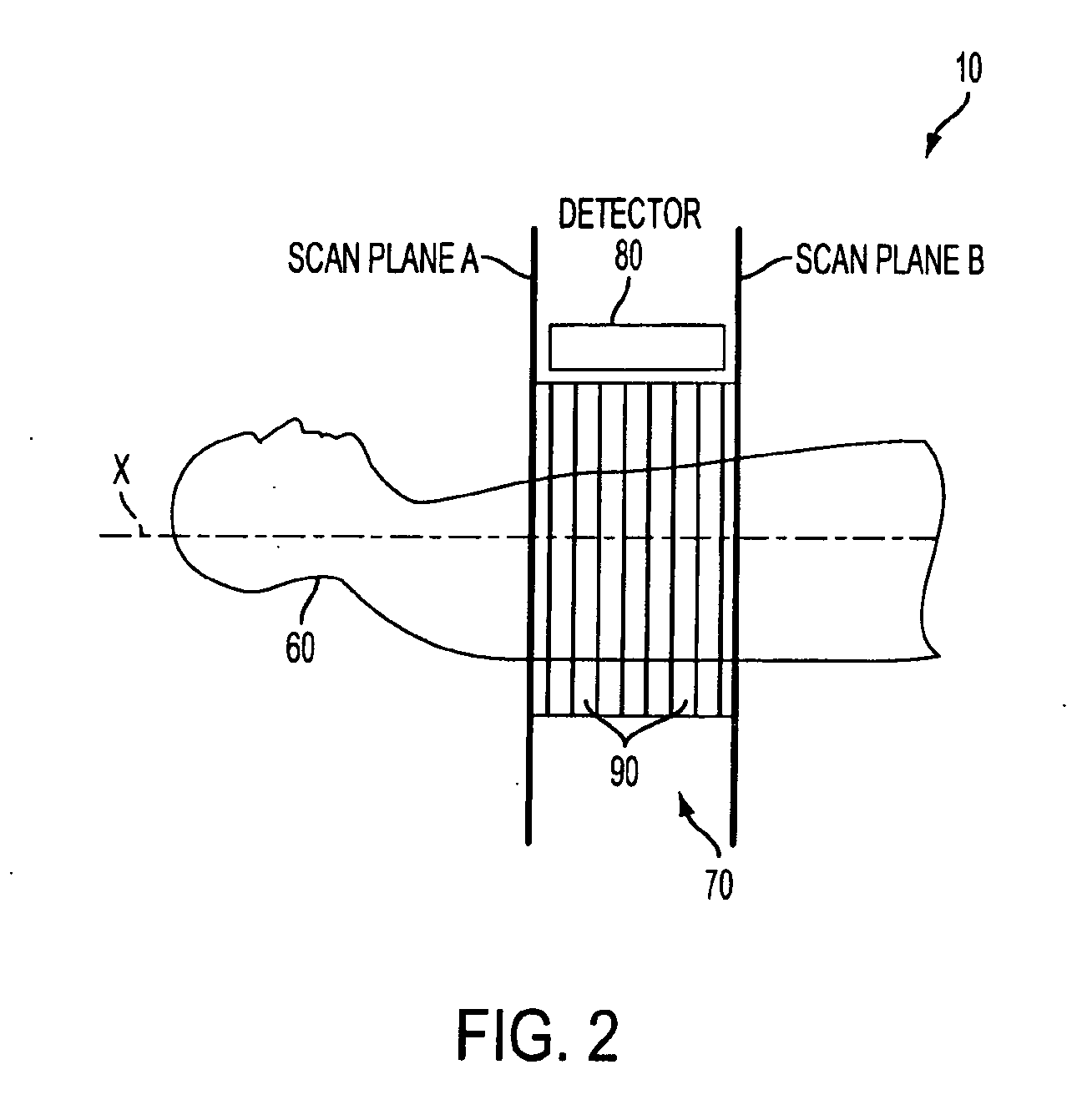Method For Generation of SPECT Trajectory Data From CT Data
a spectral trajectory and data technology, applied in nuclear engineering, instruments, material analysis using wave/particle radiation, etc., can solve the problems of difficult patient stay, affecting image quality, time-consuming spectral imaging when compared with other types of imaging procedures, etc., to maximize the geometric efficiency of the detector, the effect of minimizing the distance between the detector head and the detector head
- Summary
- Abstract
- Description
- Claims
- Application Information
AI Technical Summary
Benefits of technology
Problems solved by technology
Method used
Image
Examples
Embodiment Construction
[0036]The present invention will now be described and disclosed in greater detail. It is to be understood, however, that the disclosed embodiments are merely exemplary of the invention and that the invention may be embodied in various and alternative forms. Therefore, specific structural and / or functional details disclosed herein are not to be interpreted as limiting the scope of the claims, but are merely provided as an example to teach one having ordinary skill in the art to make and use the invention.
[0037]As illustrated in FIGS. 1-6, the present invention addresses the above-identified problems by providing a method wherein the optimal scanning trajectory of a SPECT scanning device about an object can be determined by utilizing data provided by a radiation detector of another modality, e.g., a CT scanning device. The image data provided by the CT scanning device can then be used to calculate an optimal scan trajectory for the SPECT scanning device. The object can then be scanned...
PUM
 Login to View More
Login to View More Abstract
Description
Claims
Application Information
 Login to View More
Login to View More - R&D
- Intellectual Property
- Life Sciences
- Materials
- Tech Scout
- Unparalleled Data Quality
- Higher Quality Content
- 60% Fewer Hallucinations
Browse by: Latest US Patents, China's latest patents, Technical Efficacy Thesaurus, Application Domain, Technology Topic, Popular Technical Reports.
© 2025 PatSnap. All rights reserved.Legal|Privacy policy|Modern Slavery Act Transparency Statement|Sitemap|About US| Contact US: help@patsnap.com



